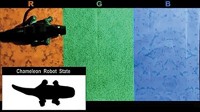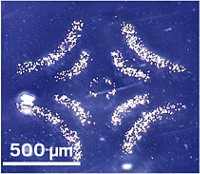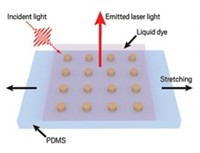Advertisement
Grab your lab coat. Let's get started
Welcome!
Welcome!
Create an account below to get 6 C&EN articles per month, receive newsletters and more - all free.
It seems this is your first time logging in online. Please enter the following information to continue.
As an ACS member you automatically get access to this site. All we need is few more details to create your reading experience.
Not you? Sign in with a different account.
Not you? Sign in with a different account.
ERROR 1
ERROR 1
ERROR 2
ERROR 2
ERROR 2
ERROR 2
ERROR 2
Password and Confirm password must match.
If you have an ACS member number, please enter it here so we can link this account to your membership. (optional)
ERROR 2
ACS values your privacy. By submitting your information, you are gaining access to C&EN and subscribing to our weekly newsletter. We use the information you provide to make your reading experience better, and we will never sell your data to third party members.
Materials
Gold nanoparticles form mirror that can be switched on and off
Metamaterial device reversibly changes its optical properties in response to voltage changes
by Celia Henry Arnaud
September 18, 2017
| A version of this story appeared in
Volume 95, Issue 37

To generate metamaterials with unusual optical properties not found in nature, scientists have used nanoscale building blocks like metal nanoparticles. But tuning those optical properties in real time has been challenging.
Researchers at Imperial College London have now created a switchable liquid mirror with gold nanoparticles. Changing the voltage makes the device flip between being a reflective mirror and a transparent window.
Anthony R. Kucernak, Joshua B. Edel, Alexei A. Kornyshev, and coworkers made their liquid mirror from 16-nm gold nanoparticles capped with 12-mercaptododecanoic acid (Nat. Mater. 2017, DOI: 10.1038/nmat4969). The nanoparticles assemble into a dense monolayer at the interface between immiscible aqueous and organic electrolyte solutions.
The density of the nanoparticles at the interface depends on the electrolyte concentrations and on the pH of the aqueous solution. The researchers dynamically control the assembly process by applying an electric potential between electrodes in the two solutions. The nanoparticles assemble tightly into a mirror at −200 mV and disassemble into a window at 200 mV.
The researchers demonstrated their device’s reflective and transmissive states by showing that when the mirror is turned on, it reflects a coin held in front of it. When turned off, the device makes paper money held behind it become visible.
“The interesting aspect of these results is the onset of reversible metallic behavior,” says David Fermin, a chemistry professor at the University of Bristol. But he thinks that these mirrors will be more useful for studying the structure of liquids at interfaces than as practical devices.





Join the conversation
Contact the reporter
Submit a Letter to the Editor for publication
Engage with us on Twitter